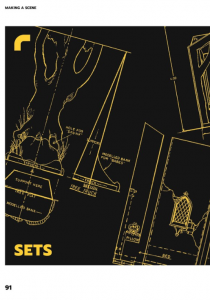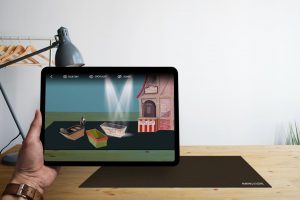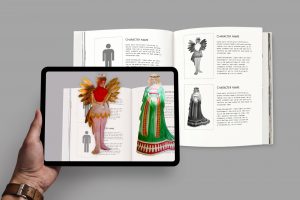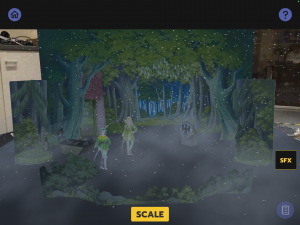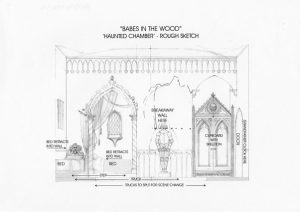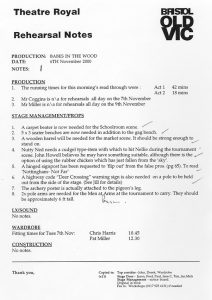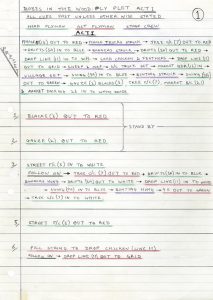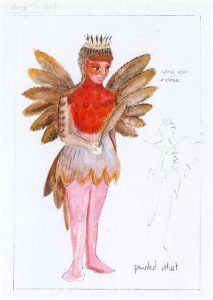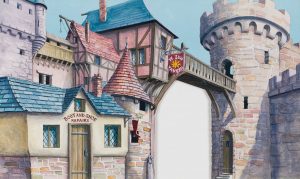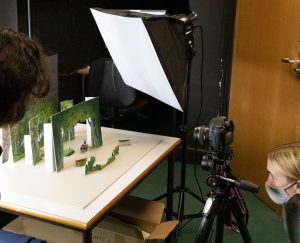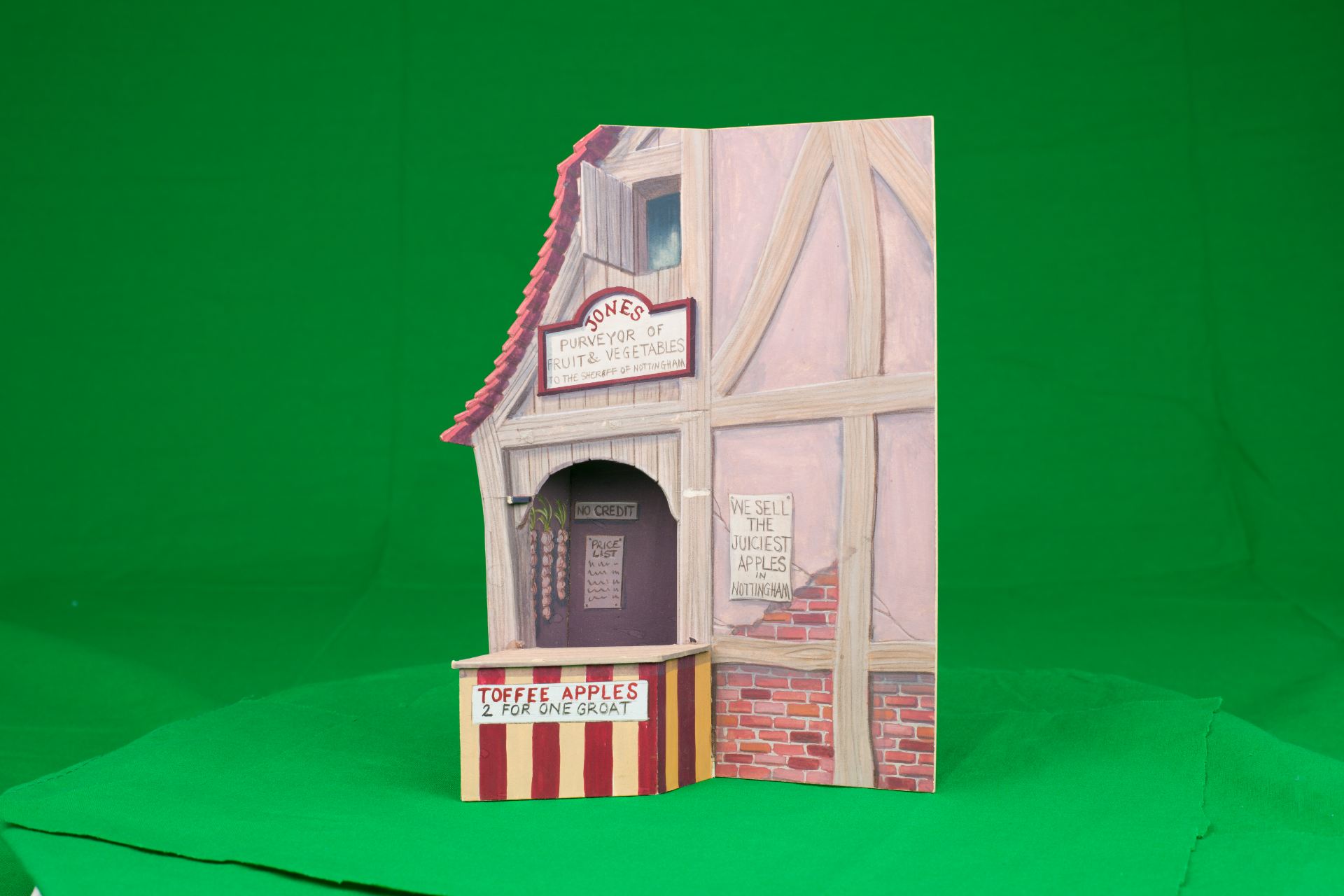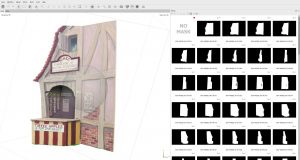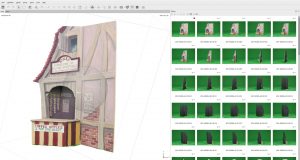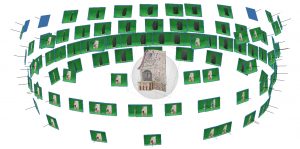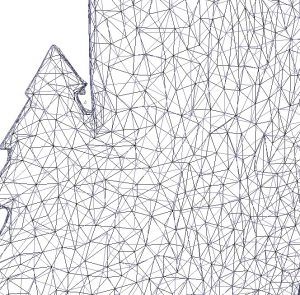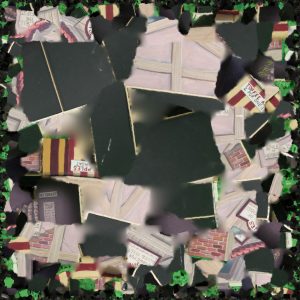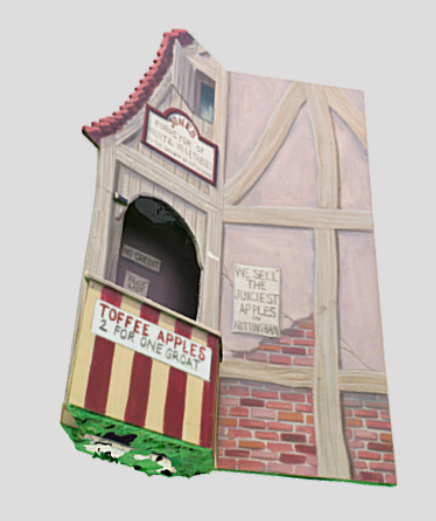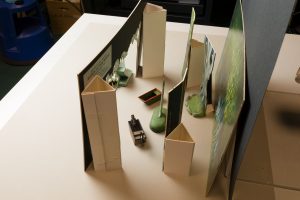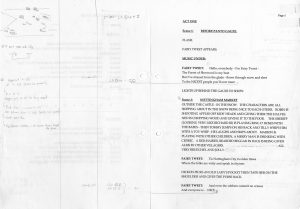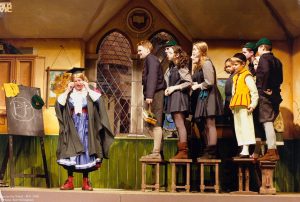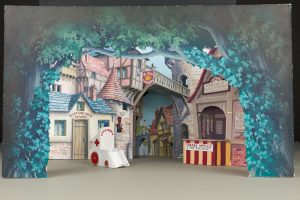Theatre is a collaborative art form. It takes a whole team of people to take a play from page to stage. All too often though, we only pay attention to the people performing onstage. Those who work backstage go unseen by the audience, and it is difficult to know just what they do, and what career opportunities exist.
Using Bristol Old Vic’s archives held at the University of Bristol Theatre Collection, Making A Scene (funded by the Museums Association Digital Innovation and Engagement fund) aims to fill this knowledge gap by giving young people across Bristol the chance to peek behind the curtain….
These blogs, written by staff involved in the project from the University of Bristol Theatre Collection, Bristol Old Vic and Zubr, a Bristol based Augmented Reality and Virtual Reality studio, are a behind the scenes look at the process of creating this behind the scenes resource.
After months of Making A Scene existing only in our imaginations, shared google documents, and thousands of emails, by the middle of March we were finally ready to begin testing.
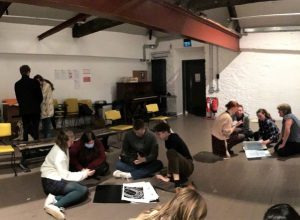
Members of Bristol Old Vic Young Company testing ‘Making A Scene’, March 2022
Our testing phase was crucial for two reasons.
First: we needed to stress-test the hardware. Would the app crash halfway through the activity? Would the AR tracking work in brightly lit classrooms and in dimly lit rehearsal rooms? Would our accompanying paper archive ‘book’ resource disintegrate immediately in the hands of energetic teenagers?
Second: we needed to see whether the content was any good. We loved what we’d made, but would our target audience? Would they enjoy designing their own scenes? Would they have a greater understanding of different backstage careers at the end of the session?
I was more apprehensive about the latter of the two reasons, and walking into OASIS Academy Brislington ahead of our first workshop did little to calm my nerves. It suddenly felt like a long time ago that I was a teenager! Luckily, most of my worries were unfounded. The app worked and the response from the 37 students who trialled it was overwhelmingly positive. They described it as ‘fun, interactive, and interesting’. As we’d hoped, it helped them learn about the ‘different kinds of jobs you can get under drama’, and gave them ideas about possible future careers.
My favourite piece of feedback came from the student who said it showed them ‘that there is more than just actors and director jobs in theatre’. Everything we wanted to achieve with Making A Scene distilled into a single sentence! Throughout the next couple of months we delivered further testing workshops to University of Bristol Theatre and Performance Students, members of Bristol Old Vic’s Young Company, and students taking part in an IntoUniversity holiday, amongst others. These went similarly well, and also gave us a lot of food for thought as to how the workshop activities might be developed.

Members of Bristol Old Vic Young Company testing ‘Making A Scene’, March 2022
What we found most interesting was how every group interacted with the resource in a completely different way. OASIS Academy students were more interested in expressing their own creativity than following a brief or working to a budget. They also worked collaboratively as a group rather than taking on a specific role as we had suggested. Comparatively, University of Bristol students found the individual role and budgeting elements the most compelling part of the resource. Based on our experience at OASIS, we originally gave the Primary aged IntoUniversity students complete creative free reign, but we found that they responded far better to being given a specific brief to respond to. When they presented back to us at the end of the session we were blown away by how confidently they were able to articulate and explain their different design choices and how well they had understood their briefs. We had less time with the Bristol Old Vic Young Company workshop, so we had thought we needed to focus on the AR app, but many of them gravitated towards looking through the physical archive ‘book’ regardless and wanted to spend more time with that.
Our learning from these iterative test-phase workshops has led to the process of implementing the following changes:
- Creating a more tailored workshop offer. As mentioned, each group we trialled the resource with responded to different elements of it. While we had originally imagined creating a single workshop for practitioners and teachers to deliver, we quickly realised we were going to need several different versions. As well as secondary school students and our target audience of young adults, it would be good to have a workshop we could also adapt for use by primary schools. We’d also need a workshop for students who had prior knowledge of theatre and a workshop for students with no knowledge at all; a workshop we could deliver in 45 minutes and a workshop we could take over 90 minutes – 2 hours. A major piece of learning for all of us, has been to embrace the fact that there is no single way to use the resource. Our role as practitioners is to encourage creativity and autonomy rather than seeking to hinder it by putting unnecessary rules and guidelines in place.
- We need to give the accompanying physical book equal status and importance. We gave priority to testing the functionality of the AR app during the testing workshops for reasons of time. In the final workshops we need to be clear and intentional about allocating time for everyone to interact with the physical resources properly and to give them equal weight and importance. This will be particularly important where groups have less prior knowledge about theatre, as spending time reading through the different role bios and looking through the contextualising documents will provide vital context. A University of Bristol student who didn’t get a chance to look at the accompanying book asked for exactly this in their feedback, writing: “More information about the actual roles would be helpful.” Linked to this, we need to think carefully about the materiality of the ‘book’, choosing a paper that is both durable and robust enough to withstand multiple workshops but which also retains an authentic archival feel.
- Adding a glossary. During workshops we were often asked to define or explain certain theatrical terms. To help practitioners with this going forward we are compiling a glossary for the back of the book.
- Removing sound. During the R&D we devoted a lot of time to trying to solve the ‘sound problem’. Unfortunately, we didn’t have any paper assets, like a sound cue list or a musical score (none were in the archive for this Babes In The Wood production) to incorporate alongside the sound designer role description that’s been included in the accompanying book. We also didn’t have any of the original sound files to download to the app alongside the 3D-scanned model box pieces and costume designs. At the eleventh hour we came up with a compromise solution of creating some tactile touch tiles, which allowed users to ‘cue’ sound effects similar to those which would have been used in the production based on our reading of the prompt script. Our hope was that they would give users a taster of what operating a sound desk is like. We trialled the tiles during the workshops and unfortunately they weren’t a success. On a practical level they could not be made loud enough to be heard in a busy classroom or workshop space. On a creative level, limiting users’ sound options to five short sound effects hindered their creativity and ability to make independent decisions about how their scene should run. By the end of the testing phase of workshops we came to the conclusion that it would be best to remove sound altogether.
- AR app tweaks: The ipad cameras had trouble picking up the AR tracking images on the black background we had originally picked out, leading to images not triggering correctly or flickering in and out of view. In between workshops, Zubr experimented with several different colour options before settling on a white and blue combination in time for the final testing workshop. The difference to the stability of the app was immediately noticeable.
![]()
![]() AR Tracking Images
AR Tracking Images
Zubr are also going to incorporate some additional elements directly requested by users into the app. These include including a ‘recycling bin’ for items longer necessary on stage (users having eyes too big for their stomachs and ending up with horribly crowded stages was a recurrent theme during each workshops…), and the ability to bring back characters ‘disappeared’ down trapdoors.
Being given the time to do a lengthy and rigorous testing stage, encompassing different age groups, locations and workshop lengths, has been vital to the success of the project. The feedback we’ve received and are now acting on will ensure that ‘Making A Scene’ is a truly user centred resource; one created in collaboration with our target audience in the fullest sense of the word, rather than in a tokenistic way as projects for young people often are. I’m incredibly excited to get started on implementing all the changes discussed above and have the resource ready for general use next month. We’ve been overwhelmed by the demand for a practical careers focused resource from local schools, especially with work experience season coming up.

